New stadiums: October four from the US
source: StadiumDB.com; author: michał
 All of them delivered in October (well, one in November…) and each so different. Great stories behind them too, even if “The Cock Pit” may sound somewhat clumsy as a nickname to some…
All of them delivered in October (well, one in November…) and each so different. Great stories behind them too, even if “The Cock Pit” may sound somewhat clumsy as a nickname to some…
Advertisement
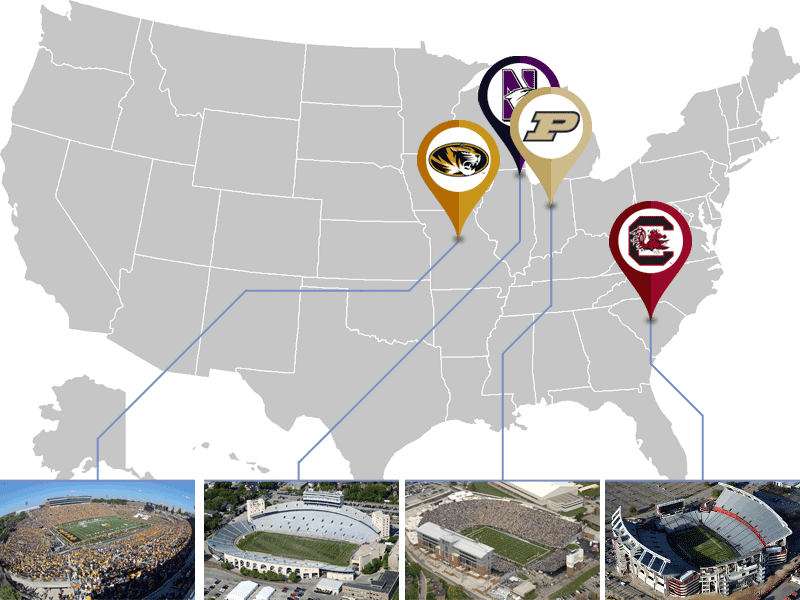
Williams-Brice Stadium, Columbia, South Carolina (80 250)
Unlike most stadiums operated by major universities, this one was funded by taxpayers back in 1934. Thus its initial name was the Columbia Municipal Stadium. Then in 1941 it was transferred to the University of South Carolina.
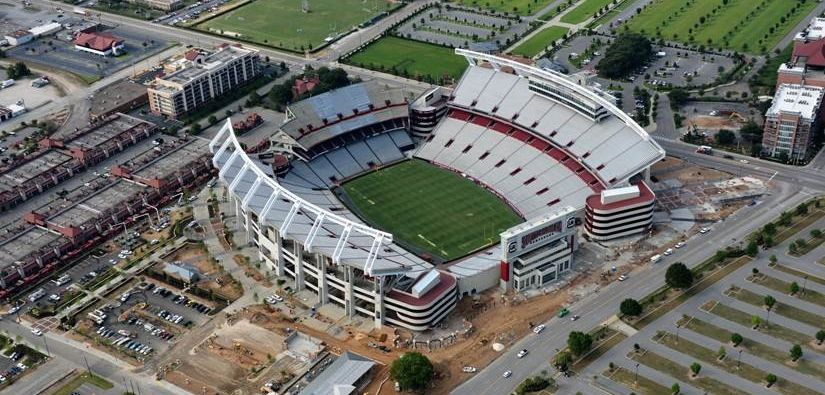
It had two grandstands along the sides, together holding some 17,600. This soon proved insufficient and resulted in one end being enclosed in 1950s and the other in 1960s, together increasing the capacity of single-tiered stands to 43,000.
Crucial changes came in 1971-1972. With great amount of private funding from the Williams and Brice family fortunes the west side was torn down and rebuilt in impressive double-tiered form with two towers on each side leading fans to the upper deck.
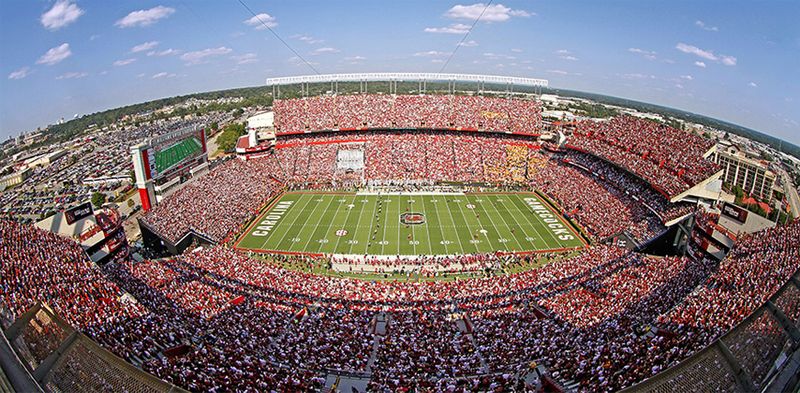
The stadium changed its name to the current one and a decade later was almost symmetric with a new upper deck added to the east stand. Lower one is still the original 1934 structure, though! Its upper extension became infamous after opening as it swayed significantly during crowd movement and had to be additionally supported in 1987 to remain safe.
Latest major addition is the south stand’s upper tier, which enabled the stadium colloquially known as The Cock Pit (from the team Gamecocks) to exceed 80,000.
Faurot Field at Memorial Stadium, Columbia, Missouri (71,168)
Legend has it that a truck and rock crusher remain buried under the stadium to this day. Those would be machines working on the creation of stadium embankments in the hard bedrock of Columbia, Missouri. Back in the 1920s its hard geological conditions caused the stadium to be more expensive and time-consuming than others built throughout the country.
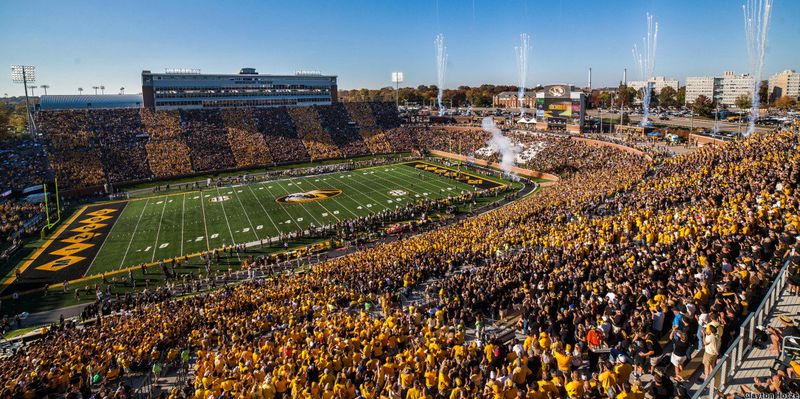
When finally delivered in 1926 as Memorial Stadium (commemorating the 112 alumni and students killed during WWI), the ground was horseshoe-shaped with an open end in the south. The field was surrounded by 400-meter running track. Interestingly, only sections along the sides were covered with concrete, while the northern curve remained a grassy hill.
Since 1927, as a students’ initiative, the hill is decorated by the “Rock M”, a giant letter M built with rocks left from construction. The rocks were painted white first and since 1927 are repainted every year by Univeristy of Missouri freshmen.
Until 1948 the stands remained single-tiered and held just over 30,000 at peak. Then additional upper sections along the west and east side began to be added. The process lasted until 1965, later topped with a modern press box in the west.
In early 1970s the university contemplated removing the running track and lowering the field to add new front rows. This proved unfeasible because of the bedrock, but the track was removed either way. To raise capacity in such conditions the stadium had to lose its initial layout with open south end. A more “rectangular” stand was erected there in 1978.
Since 1996 the ground has permanent floodlights. New millennium brought further changes with western press box growing into a large corporate hospitality building with press seats only as addition. In 2013 the green hill in the north was reshaped. Slightly more flat, but also closer to the field it now holds more people. In 2014 new uppermost deck was added to the east section, bringing capacity beyond the 70,000-mark. Eventually further 10,000 may be added in the south.
Ross-Ade Stadium, West Lafayette, Indiana (57,236)
In 1922 David E. Ross and George Ade, both great figures in Purdue University’s history, bought 65 acres (26 hectares) of dairy farm in what is now the northern edge of the campus. This is where the school’s third ever stadium was built. And of course the Ross-Ade name is self-explanatory.
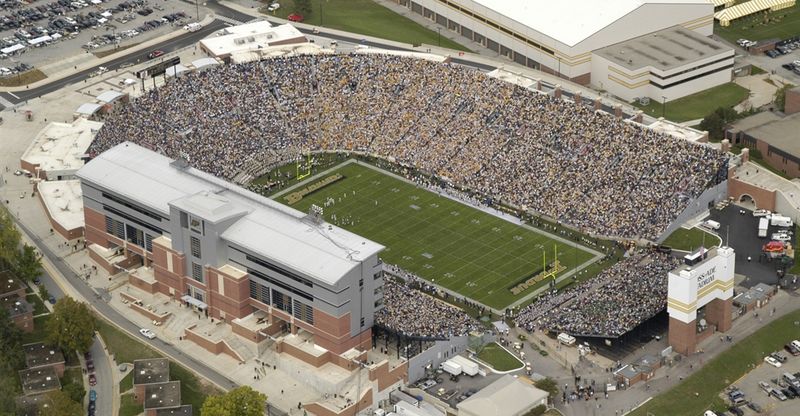
Construction only took several months because there was only one grandstand in the initial layout (13,500) and 5,000 standing room around the field and running track. Although there was landfill prepared for the northern curve already and in 1930 concrete stands covered it, increasing the size to 23,000+.
In late 1940s additional steel rows were added to the land-based stands. 1950 brought the stadium’s first press box, while in 1955 the east side was completed, creating a nearly symmetric horseshoe shape.
In 1957 the running track was removed and in 1964 the field got lowered, enabling creation of new lower rows in the track’s place. Late 1960s brought the capacity peak of over 69,000, but 70,000 was never reached. Quite the opposite, the size was reduced along with regulation changes.
The biggest change to date happened in 2001-2003, when both roads along the west and east sides of the stadium were moved to make way for expansion. Not by additional stands, but new concession and sanitary infrastructure. In the west a massive office/hospitality building was built and a piece of the stands was cut out for an open-air business section.
Ryan Field, Evanston, Illinois (47 130)
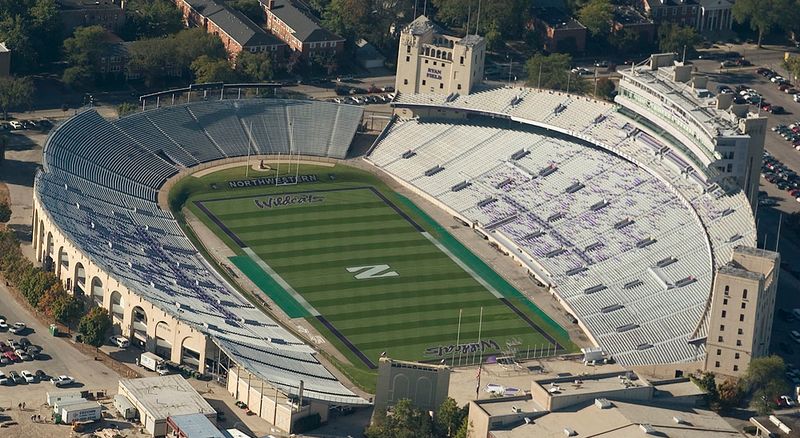
Located in the north of the Chicago metropolis, the Northwestern University’s home ground is one of the area’s oldest. It was opened in 1905 with 10,000 capacity in wooden stands. It was initiated by then-mayor William Dyche.
He was also the one behind plans to build a new 45,000-viewer stadium in the same place in 1920s. The ground was smaller upon opening in 1926, but later eventually outgrew the plan, reaching 50,000 soon after WWII.
The stands were created to resemble a horseshoe, which was significantly modified by 1996. This is when the final shape of the ground was created, perhaps among the most original worldwide. One amazing feature is the half-crescent upper tier of the west stand.
Advertisement

 StadiumDB
StadiumDB